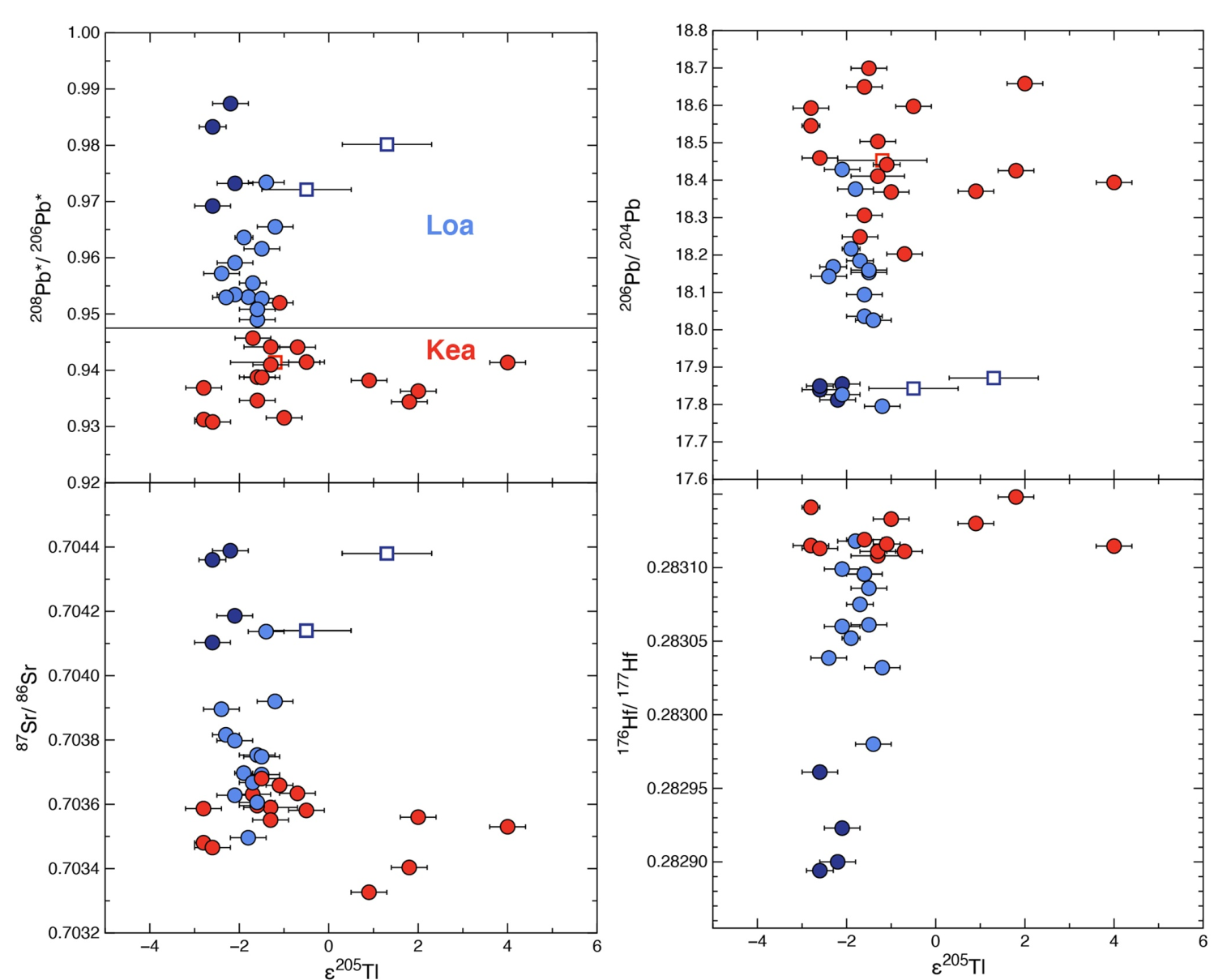Thallium isotopic compositions reveal recycled materials on the Kea side of the Hawaiian mantle plume

Nicole Williamson, Dominique Weis
The deep, ‘ambient’ pacific mantle sampled by the Kea side of the Hawaiian plume, which was thought to be relatively chemically homogeneous, contains chemical heterogeneities, according to a new UBC EOAS research published in Geochemistry, Geophysics, Geosystems.
The Hawaiian Island volcanoes record 6 Ma (mega annum; millions of years) of potentially deep mantle chemistry and form two parallel volcanic chains that are geochemically unique, named Loa and Kea. Volcanoes from the Loa trend have more “enriched” isotopic compositions, indicative of the presence of recycled surface materials in their source, whereas volcanoes from the Kea trend tend to have average deep Pacific mantle compositions.
To explore the source and origin of mantle heterogeneities in Hawaiian lavas, lead researcher Nicole Williamson (Ph.D. Candidate, Pacific Centre for Isotopic & Geochemical Research) and her co-authors Dominique Weis and Julie Prytulak (Durham University) measured thallium (TI) isotopic composition in Hawaiian basalt samples. Tl isotopes (205Tl and 203Tl) are unequally distributed across Earth's chemical reservoirs and can show large concentration contrasts, for example between pelagic sediments (>>100 ng/g) and the Earth's mantle (<1 ng/g).

Thallium isotopic compositions in Hawaiian lavas compared to radiogenic isotopes from Williamson et al, 2021.
The scientists found that among other indicators, the heavier Tl isotopic compositions measured in some volcanoes of the Kea geochemical trend might co-vary with oxygen isotopes, suggesting that their Tl compositions could also result from the presence of recycled surface materials in their source. “The Loa side of the Hawaiian plume typically erupts more chemically heterogeneous lavas, but in the case of thallium isotopes, it’s the Kea side that is more diverse in composition,” says Williamson.
The study shows that the mantle source of both the Loa and Kea geochemical trends likely contains materials recycled through the mantle, which is significant because thus far the Kea volcanoes have shown fairly uniform isotopic compositions representative of the average, deep Pacific mantle.